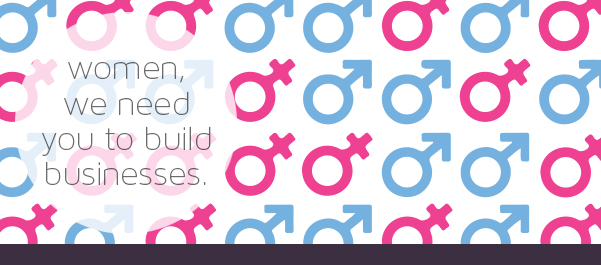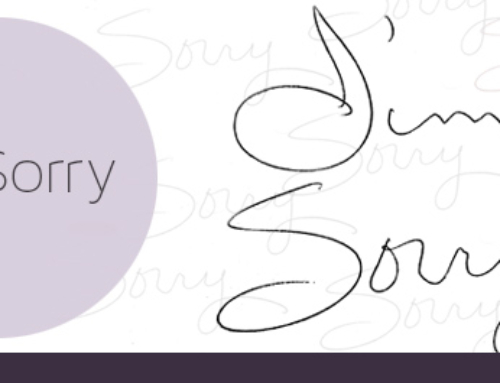The predominant business culture most of us operate in today was built by men, for men. All the rules we play by, all the expectations, all the behaviors that are talked about as helping to assure success – they’re all based on a male vibration, male patterns of behavior, male expectations. Men built these businesses. Men run them. They design for men, they build for men, they sell to men.
Yet, there is actually a business case for gender diversity. It literally pays – we have data to prove it. If you build a business that includes more women, includes more of women’s perspectives, and designs for and sells to women, you will be more profitable. The research shows it.
Unfortunately, that same research indicates our efforts at diversity aren’t really working. Corporate programs have made people better at talking about diversity and balance – not better at living it. And they have no incentive to change.
Even though the data shows they can be more profitable by including more women in their business, it doesn’t change their actual behavior. I wouldn’t expect it to. Most business models today serve many men (though not all of them) perfectly well, just as they are.
Meanwhile, every gender-based conversation we have about what a woman can do to be more successful is just that – gender-based. We’re talking about how women can succeed within a male vibration. Lets talk about how businesses could be structured to better serve everyone (we are going to have to build them).
We can change the culture by building the businesses. We have to build businesses that intentionally have a balance of the masculine and feminine. We have to build businesses with a balance of men and women working in them. And who has the best shot at building those businesses?
Who do you think?








I recently heard a woman speak and she had a statistic about women owned businesses that pass the 1M annual revenue mark. It was something like 2% vs 40% for men. Love the idea about women taking charge and building better businesses for everyone, but is the market also structured for males?
Being self-employed, my business is very small, but it provides for me several self-empowerments. One is the freedom to work in the way I wish, with flexibility in my schedule which can meet both my own needs AND the needs of my clients. The second is the freedom to serve my clients very well, in a way that is comfortable for me. My business is massage and holistic health, and I’ve been doing this for 15 years already. This is my third career, but I hope to keep going at this for another 30 or so years! I highly recommend women going into business for themselves.
Hi Jan–your comment touches on a very important aspect of starting your own business — it is a form of empowerment. Going out on my own has also allowed me to take my power back. So many of us feel trapped in situations where we have given up our power in exchange for an apparent connection to the company we have turned our power over to. However, sometimes we can be taken advantage of due to the fear of losing that connection (job loss, the promotion or title we worked so hard for, retirement savings, etc.).
The freedom and flexibility provided also allows for you to live your life and serve your clients in a way that works for you and your clients. There’s no reason that could not be a basic tenant of any business we started! You are a perfect example of the empowered feminine!
Hi Ben–you are correct. The even more astonishing number is that women are starting up companies at two times the rate of men but are raising 1/27th (yes, that is right) of the capital. Even if they are starting technology companies, they are being funded at 1/15 to 1/20th of what the men are raising.
The interesting part is the new research that is beginning to show the impact women owned businesses have on the economy…
http://www.nwbc.gov/research/economic-impact-women-owned-businesses-united-states
“What happens if women-owned firms were not in the economy and generating this $2.8 Trillion in economic impact? An additional 16 percent of our labor force would be jobless – that’s 23 million people!
The data reveal the untapped potential of women business owners. If the great majority of women-owned firms were employer firms as opposed to what we have today (80% non-employer, 20% employer), the overall economic impact would be exponentially greater than it is today – perhaps 3 to 4 times greater, possibly exceeding $10 trillion!
This research when communicated effectively and widely can be the impetus for young women to pursue business ownership. Currently women in the U.S. have reached parity with men in education and, in fact, surpass men in number receiving baccalaureate and master’s degrees. The rub exists in the gap in career opportunities and salaries received throughout their work life. The gap exists in average annual revenues for small businesses with men surpassing women in all race/ethnic groups.
The data indicate a continuing social and cultural shift for work and for women. Full or part time entrepreneurship is a well-established trend. From 1997 to 2002, the Census data report that nearly all growth in small businesses came in the non-employer segment and women had the largest growth compared to other groups. The overarching shift reflects the education, experience and characteristics of women at different stages of their lives. It also reflects the lack of opportunities and flexibility in major
corporations.”